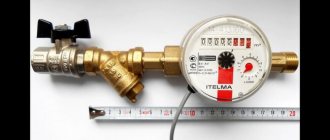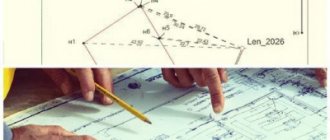The rules in force today have changed the service life of passenger elevators. Management companies have new responsibilities, and their work is strictly monitored. In addition to the fact that it is necessary to know what service life of the elevator is prescribed by law, management companies are obliged to adhere to the standards when servicing the equipment.
The article contains:
- What is the service life of an elevator in an apartment building?
- Rules and laws
- How to extend the service life of a passenger elevator?
- Service life of elevator equipment
How to extend the service life of a passenger elevator?
Extending the service life contains several stages: the management company submits a request for an assessment, an accredited company inspects elevators that have completed their standard service life, and draws up a conclusion.
Next, the defects are eliminated, the inspection company records the results and issues a declaration of conformity. The owner’s task is to submit a notification to the authorized body, waiting ten working days for a response. If there are no violations, after a week, a permit is issued.
The period of uninterrupted operation of the passenger lift increases compliance with instructions. Strict adherence to the requirements for the number of passengers and the weight of the cargo transported will significantly reduce the wear of parts. The owner is obliged to monitor the condition of the lift and promptly respond to calls from stranded passengers. Constant overloading of the mechanism, intentional damage to the equipment, significantly reduces the service life of the lifting machine.
Fines for elevators
Part 1 of Article 14.43 of the Code of Administrative Offenses of the Russian Federation. Violation by the manufacturer, performer (a person performing the functions of a foreign manufacturer), seller of the requirements of technical regulations or mandatory requirements for products or for products and related to the requirements for products design processes (including research), production, construction, installation, commissioning, operation, storage, transportation, sale and disposal or release into circulation of products that do not meet such requirements, with the exception of cases provided for in Articles 6.31, 9.4, 10.3, 10.6, 10.8, Part 2 of Article 11.21, Articles 14.37, 14.43.1, 14.44, 14.46, 14.46.1, 20.4 of this Code, - (as amended by Federal Laws of 05.05.2014 N 119-FZ, of 31.12.2014 N 521-FZ, of 29.12.2017 N 446-FZ) (see text in the previous edition) entails the imposition of an administrative fine on citizens in the amount of one thousand to two thousand rubles; for officials - from ten thousand to twenty thousand rubles; for persons carrying out entrepreneurial activities without forming a legal entity - from twenty thousand to thirty thousand rubles; for legal entities - from one hundred thousand to three hundred thousand rubles. Part 2 of Article 14.43 of the Code of Administrative Offenses of the Russian Federation. Actions provided for in Part 1 of this article, resulting in harm to the life or health of citizens, property of individuals or legal entities, state or municipal property, the environment, life or health of animals and plants, or creating a threat of harm to the life or health of citizens, the environment, life or the health of animals and plants - entail the imposition of an administrative fine on citizens in the amount of two thousand to four thousand rubles with or without confiscation of the items of the administrative offense; for officials - from twenty thousand to thirty thousand rubles; for persons carrying out entrepreneurial activities without forming a legal entity - from thirty thousand to forty thousand rubles with or without confiscation of the items of the administrative offense; for legal entities - from three hundred thousand to six hundred thousand rubles with or without confiscation of the items of the administrative offense. Repeated commission of an administrative offense provided for in Part 2 of this article - (as amended by Federal Law No. 196-FZ of July 23, 2013) (see text in the previous edition) entails the imposition of an administrative fine on citizens in the amount of four thousand to five thousand rubles with confiscation of items of an administrative offense; for officials - from thirty thousand to forty thousand rubles; for persons carrying out entrepreneurial activities without forming a legal entity - from forty thousand to fifty thousand rubles with confiscation of the items of an administrative offense or administrative suspension of activities for up to ninety days with confiscation of the items of an administrative offense; for legal entities - from seven hundred thousand to one million rubles with confiscation of items of an administrative offense or administrative suspension of activities for up to ninety days with confiscation of items of an administrative offense. Note. Mandatory requirements in this article, Articles 14.46.2 and 14.47 of this Code, subject to application before the date of entry into force of the relevant technical regulations, mean mandatory requirements for products or for products and the processes of design (including surveys), production, construction, related to the requirements for products, installation, commissioning, operation, storage, transportation, sale and disposal established by regulatory legal acts in force in accordance with the Treaty on the Eurasian Economic Union of May 29, 2014, as well as the requirements of regulatory legal acts of the Russian Federation and federal regulatory legal acts that do not contradict them executive authorities subject to mandatory execution in accordance with paragraphs 1 - 2 and 6.2 of Article 46 of the Federal Law of December 27, 2002 N 184-FZ “On Technical Regulation”.Service life of elevator equipment
Elevator spare parts have a certain service life, depending on the production date.
| Lift equipment | Average duration of work (years) |
| Control cabinet | 25 |
| Elements: | |
| – transformers, boards, relays, starters, switches | 12,5 |
| Winch | 25 |
| Accessories: | |
| – tap block | 10 |
| – brake half-coupling | 12,5 |
| – braking device | 12,5 |
| – gearbox | 12,5 |
| - engine | 15 |
| – rope guide pulley | 5 |
| Tensioning equipment | 12,5 |
| Input device | 25 |
| Speed limit equipment | 12,5 |
| Rope (cable) of speed limiting device | 5 |
| Lifting machine cabin | 25 |
| Elements: | |
| – coupe | 12,5 |
| – door (cabin beam, leaf, threshold) | 12,5 |
| – door drive | 5 |
| Counterweight | 25 |
| Elements: | |
| – top beam | 12,5 |
| – suspension parts | 5 |
| Components of DS: | |
| – threshold | 12,5 |
| – sash | 12,5 |
| – upper beam ДШ | 12,5 |
| Portal (door opening frame) | 25 |
| Wiring (electricians) | 15 |
| Hanging cable | 5 |
| Frequency converter and its components | 12,5 |
| Push-button posts (calling, ordering) | 12,5 |
| Travel sensors | 12,5 |
| Traction ropes | 5 |
| Electronic control systems | 12,5 |
| Buffer device | 25 |
Author of the article: LiftKomplekt
About 650 elevators were replaced in apartment buildings in the Moscow region in 2021
In the Moscow region, a large-scale program of overhaul of the common property of apartment buildings is being implemented; over 7 years, specialists have replaced 11,575 elevators in 3,713 apartment buildings, reports the press service of the Ministry of Housing and Communal Services of the Moscow Region.
“To date, the three-year short-term plan for replacing elevators in 2020-2022 has been completed by 60%,” said Anton Velikhovsky, Minister of Housing and Communal Services of the Moscow Region.
The most elevator equipment was replaced in the urban districts of Krasnogorsk, Korolev, Mytishchi, Leninsky, Odintsovo, Lyubertsy, Reutov, Elektrostal, Dmitrovsky, Istra, and Pushkinsky.
In 2021, 648 works on elevator equipment were completed in 204 apartment buildings in the region.
Despite the high pace of work on replacing elevator equipment, on behalf of the Governor of the Moscow Region Andrei Vorobyov, the program for replacing and repairing elevator equipment with a service life of 20 to 25 years was adjusted.
All components necessary for carrying out work to replace elevators are produced in the region. Acceptance of completed work is carried out with the mandatory participation of supervisory authorities and representatives of the public. When introducing new elevator equipment, Rostechnadzor representatives check the management and operating organization for the presence of all required operating documentation and qualified personnel. The measures directly affect the quality of subsequent operation of elevators.
In terms of safety, elevators are equipped with modern mechanical and electrical devices, in accordance with the current regulations of the European Customs Union. Doorways are equipped with “smart sensors” responsible for safety. Sensors do not allow the doors to close if, for example, a child or pet is standing in the opening.
The new elevators are energy-saving, have vandal-proof cabins and are quiet. The lighting in the elevator is LED, durable and economical. In addition, the elevators are adapted for people with disabilities. Each cabin has a handrail, and the numbers on the buttons are duplicated in Braille.
Residents of the Moscow region can familiarize themselves with the targeted program for the overhaul of apartment buildings in the Moscow Region on the interactive map of the Capital Repair Fund of the Moscow Region.
How to apply for a subsidy for utility bills online in the Moscow region>>
The Supreme Court allowed an apartment on the 17th floor without an elevator
Larisa Svetlova* bought non-residential premises on the last, technical, floor of an apartment building in the Frunzensky district of St. Petersburg. Six months later, the woman asked the municipal administration to approve the redevelopment and transfer of the premises to residential use, but was refused. The redevelopment project violates fire safety standards and other mandatory requirements, the administration explained. Then Svetlova went to court.
The Frunzensky District Court decided that the administration’s refusal was legal. Residential premises located above the fifth floor must be accessible by an elevator. And in this house it does not rise above the 16th floor. Obviously, that is why the top floor is non-residential, the court indicated.
“Access to residential premises located in an apartment building above the fifth floor, with the exception of the attic floor, must be carried out using an elevator” (clause 17 of the Regulations on recognizing premises as residential).
And, the court added, the redevelopment project violates fire safety requirements. In particular, there is no additional isolated exit on the floor. If the plaintiff’s premises are converted into residential, then the residential and non-residential parts of the technical floor will have a common evacuation exit, but this is not possible (case No. 2a-5876/2019).
The appeal and the first cassation supported this approach, and Svetlova appealed to the Supreme Court.
BC decided that it is possible without an elevator
The Supreme Court interpreted clause 17 of the Regulations on recognizing premises as residential not as formally as lower authorities. As the trio of judges chaired by Valentin Aleksandrov decided, climbing one floor by stairs does not contradict this norm.
The Supreme Court also did not like the way other authorities assessed fire safety. A separate emergency exit is needed if there are public premises on the technical floor along with the plaintiff’s apartment, the Supreme Court emphasized. According to the Housing Code, stairwells, elevators, the technical floor itself and other objects that are in common ownership of all residents do not belong to such premises, the Supreme Court recalled (case No. 78-KAD21-2-KZ).
The district court will have to find out whether there are public premises on the floor when the case is reconsidered. The proceedings are ongoing (No. 2a-4793/2021).
Broad interpretation or non-standard logic
In this case, the Supreme Court demonstrated non-standard logic, says Igor Ershov, head of the arbitration practice of AB Khalimon and Partners Khalimon and Partners Federal Rating. . The Supreme Court does not deny that an elevator is necessary for residential premises located above the fifth floor. At the same time, he reminds that up to five floors an elevator is not required. Here it is not only between the 16th and 17th floors, which means there are no violations, Ershov explained the logic of the court.
Lower courts interpreted the rule literally, and the Supreme Court interpreted it broadly, says Olga Batura, head of the real estate and PPP practice at Duvernois Legal Duvernois Legal Regional Rating. group Arbitration proceedings (major disputes - high market) group Land law/Commercial real estate/Construction group Corporate law/Mergers and acquisitions group Dispute resolution in courts of general jurisdiction group Bankruptcy (including disputes) Company profile.
We are talking about converting into residential non-residential premises located on the technical floor, and not on the attic. That is, from a formal point of view, the lower courts were not mistaken.
Olga Batura, head of real estate and PPP practice Duvernois Legal Duvernois Legal Regional rating. group Arbitration proceedings (major disputes - high market) group Land law/Commercial real estate/Construction group Corporate law/Mergers and acquisitions group Dispute resolution in courts of general jurisdiction group Bankruptcy (including disputes) Company profile
She also believes that the Supreme Court equated the evacuation exit to an emergency exit: “Although SNIP 21-01-97 does not classify an emergency exit as an evacuation exit, and even directly indicates this in paragraph 6.19.” This is also a broad interpretation, Batura emphasized.
*Name and surname have been changed by the editors.
- Ekaterina Korobka
- Supreme Court of the Russian Federation
- Civil process









